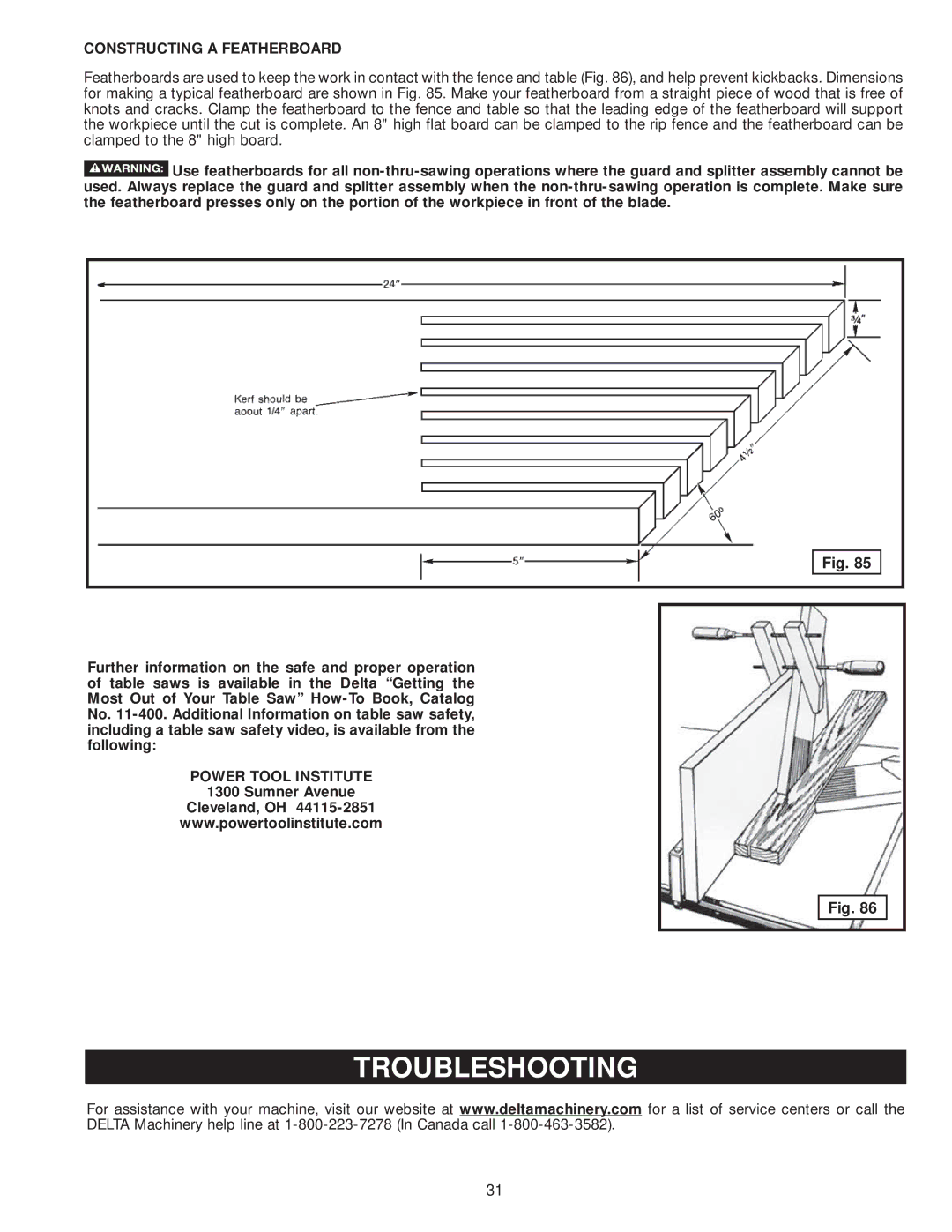
CONSTRUCTING A FEATHERBOARD
Featherboards are used to keep the work in contact with the fence and table (Fig. 86), and help prevent kickbacks. Dimensions for making a typical featherboard are shown in Fig. 85. Make your featherboard from a straight piece of wood that is free of knots and cracks. Clamp the featherboard to the fence and table so that the leading edge of the featherboard will support the workpiece until the cut is complete. An 8" high flat board can be clamped to the rip fence and the featherboard can be clamped to the 8" high board.
![]() Use featherboards for all
Use featherboards for all
Fig. 85
Further information on the safe and proper operation of table saws is available in the Delta “Getting the Most Out of Your Table Saw”
POWER TOOL INSTITUTE
1300 Sumner Avenue
Cleveland, OH
Fig. 86
TROUBLESHOOTING
For assistance with your machine, visit our website at www.deltamachinery.com for a list of service centers or call the DELTA Machinery help line at
31
